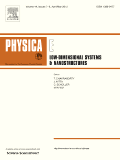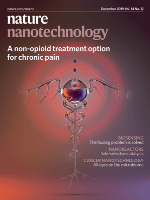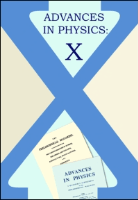
Microfluidics and Nanofluidics
metrics 2024
Advancing the Frontiers of Micro and Nanotechnology
Introduction
Microfluidics and Nanofluidics is a distinguished academic journal published by Springer Heidelberg, focusing on the rapidly evolving fields of micro and nanotechnology. With a commitment to disseminating cutting-edge research, this peer-reviewed journal aims to bridge the gap between fundamental science and practical application within Condensed Matter Physics, Materials Chemistry, and Nanoscience and Nanotechnology. It holds an influential position in its field, reflected by its Category Quartiles (Q3) and notable Scopus Rankings, including a ranking of #145 in Condensed Matter Physics. Researchers, professionals, and students will find this journal to be an invaluable resource for accessing pioneering studies, methodologies, and innovative technologies essential for advancing knowledge and applications in micro and nanofluidics. With an extensive history from 2004 to 2024, Microfluidics and Nanofluidics continues to foster discussion and collaboration within the scientific community, solidifying its role as a leading platform for scholarly communication in this dynamic discipline.
Metrics 2024
 0.38
0.38 2.30
2.30 2.40
2.40 100
100Metrics History
Rank 2024
Scopus
IF (Web Of Science)
JCI (Web Of Science)
Quartile History
Similar Journals

Micro and Nano Engineering
Connecting global minds through open-access research.Micro and Nano Engineering, published by ELSEVIER, is a premier open-access journal dedicated to advancing the fields of atomic and molecular physics, condensed matter physics, as well as electrical and electronic engineering. With an E-ISSN of 2590-0072, the journal has established itself as an influential platform for the dissemination of cutting-edge research and innovative methodologies in micro- and nano-scale technologies since its inception in 2018. The journal proudly holds a Q2 category ranking in several discipline-specific quartiles for the year 2023, including Atomic and Molecular Physics, highlighting its significance in the academic community. Located in Amsterdam, Netherlands, Micro and Nano Engineering offers researchers and practitioners a unique opportunity to publish their work and gain visibility through its rigorous peer-review process and high-quality editorial standards. The open-access model ensures that research findings are accessible to a global audience, fostering collaborative advancements and ongoing discourse within these dynamic fields. Whether you are a researcher, professional, or student, Micro and Nano Engineering is your go-to source for pivotal developments in nanotechnology and engineering applications.

PHYSICA E-LOW-DIMENSIONAL SYSTEMS & NANOSTRUCTURES
Connecting researchers to the evolving landscape of nanotechnology.PHYSICA E-LOW-DIMENSIONAL SYSTEMS & NANOSTRUCTURES, published by ELSEVIER, is a premier journal dedicated to advancing the field of condensed matter and nanoscience, focusing on the innovative properties and applications of low-dimensional systems. With an esteemed Q2 ranking in multiple categories including Atomic and Molecular Physics, Condensed Matter Physics, and Nanoscience for 2023, this journal serves as a vital platform for researchers and professionals aiming to disseminate and discuss cutting-edge research. Established in 1974 and converging its focus from 1997 onwards, PHYSICA E captures the evolving landscape of material science, making it a crucial resource for anyone invested in the dynamics of electronic, optical, and magnetic materials. Although the journal operates on a subscription basis, its broad accessibility and significant placement within Scopus rankings—such as being in the 83rd percentile for Condensed Matter Physics—underscore its importance within the academic community. Researchers and students alike will find this journal a cornerstone for fostering knowledge and collaboration in the fields of nanotechnology and low-dimensional physics.

Advanced NanoBiomed Research
Innovating at the Intersection of Science and MedicineAdvanced NanoBiomed Research is a pioneering open-access journal committed to advancing the interdisciplinary field of nanobiotechnology, published by WILEY-V C H VERLAG GMBH. Since its inception in 2021, this journal has provided a platform for innovative research that bridges the gap between engineering, medicine, and materials science. With impressive rankings in Scopus, positioning it within the top quartiles of various categories, Advanced NanoBiomed Research aims to disseminate high-quality research that contributes to the understanding and application of nanomaterials in biomedical contexts. As it encompasses a wide scope—from applied microbiology to biomaterials—it serves as an essential resource for researchers, professionals, and students eager to explore the cutting-edge developments in the field. The journal promotes a collaborative environment where emerging ideas can flourish, ensuring that vital advancements in nanobiomedicine can be shared and built upon within the scientific community.

Journal of Experimental Nanoscience
Advancing the Frontiers of NanoscienceThe Journal of Experimental Nanoscience, published by Taylor & Francis Ltd, is an esteemed open-access journal dedicated to advancing the field of nanoscience and its applications across various disciplines. Since its establishment, the journal has aimed to provide a comprehensive platform for researchers and professionals to disseminate innovative findings in nanotechnology, bioengineering, and materials science. With an ISSN of 1745-8080 and E-ISSN of 1745-8099, this journal has been pivotal in promoting high-quality research in its converged years from 2006 to 2024. Recognized for its contributions, it currently holds a Q3 ranking in core categories such as Bioengineering, Biomedical Engineering, Materials Science, and Nanoscience and Nanotechnology. Although its H-index is not specified, its Scopus ranks reflect its growing influence, with notable percentiles in various engineering fields. By offering open access since 2016, the Journal of Experimental Nanoscience enhances the accessibility of vital research to a global audience. Researchers, professionals, and students will find this journal an invaluable resource for staying abreast of the latest advancements and breakthroughs in nanoscience.

PHYSICA B-CONDENSED MATTER
Elevating Scholarship in Condensed Matter Physics and EngineeringPHYSICA B-CONDENSED MATTER, published by Elsevier, stands as a leading journal within the field of condensed matter physics, electrical and electronic engineering, as well as electronic, optical, and magnetic materials. With an impressive impact factor and a solid ranking in various Scopus categories—Q2 for 2023 in Condensed Matter Physics, Electrical and Electronic Engineering, and Electronic, Optical, and Magnetic Materials—this journal offers a vital platform for advancing research and fostering collaboration among academics and industry professionals. The scope of the journal encompasses a wide range of topics, including fundamental research findings, applications, and technological innovations in condensed matter. While it does not currently provide open access, PHYSICA B-CONDENSED MATTER is highly regarded for its rigorous peer-review process and dedication to high-quality scholarship, making it an indispensable resource for researchers, professionals, and students keen on exploring the complexities and advancements in materials science. Submissions are welcomed from a global community of scholars, contributing to an ongoing discourse in this dynamic and rapidly evolving field.

Materials Today
Unveiling the Science Behind Material MarvelsMaterials Today is a premier academic journal published by Elsevier Science Ltd, specializing in the dynamic fields of materials science, mechanical engineering, and condensed matter physics. Established in 1999, the journal has garnered an enviable reputation, consistently ranking in the Q1 category across multiple disciplines including mechanics of materials and general materials science, reflecting its influence and high-quality research output. With an impressive Scopus ranking—4th in both mechanical engineering and mechanics of materials, and 6th in condensed matter physics—Materials Today serves as an essential resource for researchers, professionals, and students seeking to stay at the forefront of developments in material innovations and applications. The journal is known for its commitment to publishing significant research findings and reviews, making it a vital platform for disseminating knowledge and fostering collaboration in the rapidly evolving materials field. Although it does not offer open access, its robust impact factor underscores the importance of the content published, ensuring wide visibility and citation among the academic community. Explore the rich tapestry of materials research with Materials Today, where groundbreaking insights pave the way for future technological advancements.

Nanoscale Research Letters
Advancing the frontiers of nanoscience.Nanoscale Research Letters, published by SPRINGER, is a leading open-access journal dedicated to the rapid dissemination of innovative research in the field of nanoscience and nanotechnology. Established in 2006, this journal provides researchers and professionals with a platform to share their groundbreaking findings across a broad spectrum of applications, including condensed matter physics and materials science. With an impressive Q1 ranking in both Condensed Matter Physics and Materials Science categories as of 2023, it asserts its position as a top-tier publication within the scientific community, bolstered by a 96th percentile rank in the Scopus database. Nanoscale Research Letters not only emphasizes the importance of nanotechnology research but also ensures that its findings are widely accessible, adhering to its open-access mandate. Scholars and students alike are encouraged to contribute to and engage with this dynamic resource, fostering collaboration and innovation in the ever-evolving world of nanoscience.

ACS Nanoscience Au
Transforming Research into Open Access DiscoveriesACS Nanoscience Au, published by the American Chemical Society, is a leading open-access journal dedicated to the rapidly evolving field of nanoscience. Since its inception in 2021, this journal has established itself within the top quartiles of academic publishing, ranking Q1 in both Chemistry and Materials Science for 2023. With a commitment to disseminating high-quality research, it provides a platform for innovative findings in nanomaterials, nanotechnology applications, and associated interdisciplinary studies. The journal is based in the United States and embraces an open-access model, ensuring that research is freely accessible to a global audience. This initiative not only enhances the visibility of authors' work but also facilitates collaboration across scientific domains. As a vital resource for researchers, professionals, and students alike, ACS Nanoscience Au plays a crucial role in advancing knowledge in the nanoscience community.

Nature Nanotechnology
Pioneering Innovations at the Nanoscale.Nature Nanotechnology, published by NATURE PORTFOLIO, stands at the forefront of scientific innovation, focusing on the rapidly evolving field of nanoscience and nanotechnology. With an impressive impact factor and ranking in the top Q1 quartiles across multiple disciplines—including Atomic and Molecular Physics, Bioengineering, and Materials Science—this journal is a pivotal resource for researchers and professionals dedicated to advancing knowledge and applications at the nanoscale. Its diverse scope encompasses cutting-edge research that bridges disciplines, addressing critical challenges in engineering, physics, and biomedical fields. Although the journal currently does not offer an open-access option, readers can access a wealth of information that is vital for anyone involved in pioneering research and development efforts. With its robust editorial standards and a commitment to publishing high-caliber, groundbreaking work, Nature Nanotechnology serves as an indispensable platform for the dissemination of transformative ideas that will shape the future of technology and science.

Advances in Physics-X
Empowering Knowledge through Open AccessAdvances in Physics-X is a premier open-access journal published by Taylor & Francis Ltd, dedicated to advancing the frontiers of knowledge in the field of Physics and Astronomy. Since its inception in 2016, the journal has established itself as a vital platform for researchers and professionals, showcasing innovative research and cutting-edge theories that influence a broad array of sub-disciplines within physics. With an impressive impact factor and ranked in the 94th percentile among its peers, it resides in the Q1 category for Physics and Astronomy (miscellaneous), indicating its significant contributions to the academic community. Located in the United Kingdom, the journal encourages open access to foster wider dissemination and visibility of scholarly works, aligning with contemporary academic trends that prioritize global knowledge sharing. The ongoing commitment to publishing high-quality research ensures that Advances in Physics-X remains an essential resource for students, industry experts, and academics alike, helping to shape the future of physics research through collaboration and innovation.